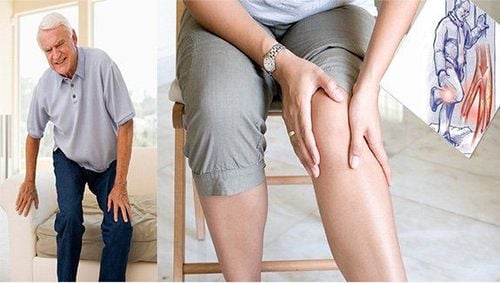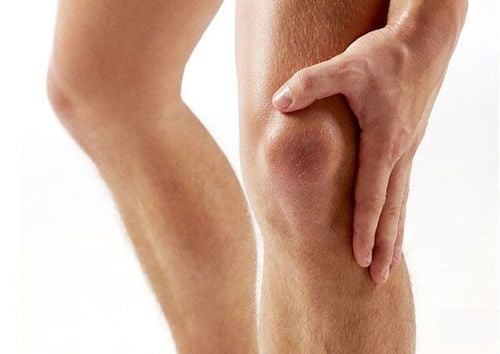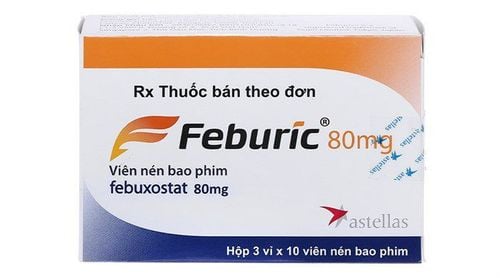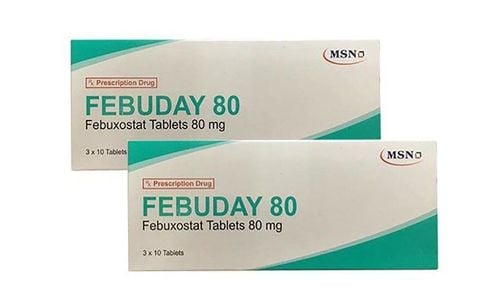This is an automatically translated article.
Pseudo-Gout is a form of arthritis characterized by sudden, painful swelling in one or more joints. If left untreated, pseudogout can lead to severe osteoarthritis.
1. What is Pseudo-Gout?
Pseudogout is a form of arthritis characterized by sudden, painful swelling in one or more joints. Episodes of pain can last for days or weeks. Pseudo-gout is common in the elderly and affects mainly the knees.
Pseudogout, also known as calcium pyrophosphate deposition disease, is similar to gout. Pseudogout and gout occur when crystals form in the fluids that lubricate joints, causing pain and inflammation. Pseudo-gout affects the knees and can develop in the ankles, wrists and elbows, while gout tends to affect the big toe.

Bệnh giả Gout gây dưng khớp
2. Causes and risk factors
The cause of pseudogout is calcium pyrophosphate dihydrate crystals that migrate from the cartilage in and around the joints to the lining of the joints, causing inflammation. However, the cause of crystal formation is unknown, they appear to be related to the aging process.
Certain factors increase the risk of pseudogout such as:
Family history of pseudogout Trauma: For example injury or surgery to the affected joint, which will increase the risk of developing crystals calcium pyrophosphate dihydrate in joints. Older adults: More calcium pyrophosphate dihydrate crystals are commonly found in the joints, and are more likely to experience pseudogout. Excess iron storage in the body: Excess iron storage in organs and tissues around joints and in joints can lead to the development of calcium pyrophosphate dihydrate crystals.
3. Symptoms of pseudogout

Đau khớp
Pseudo-gout usually affects the knees, other joints also affect: ankles, hands, elbows and shoulders, wrists. Patients with pseudogout can have symptoms such as:
Joint swelling Joint pain Pseudo-gout has clinical manifestations quite similar to chronic arthritis, rheumatoid arthritis and gout. About 25% of people with pseudogout have clinical symptoms that are identical to those of gout. About 5% of patients develop symptoms that closely resemble rheumatoid arthritis. While about 50% of patients with pseudogout develop chronic arthritis-like symptoms.
Pseudo-gout usually develops from one joint and has a rather sudden and intense onset. The onset of pseudogout usually lasts from a few days to two weeks. The patient may have a fever. The disease is often associated with another disease such as: iron deficiency, ochronosis, hypothyroidism, hyperparathyroidism, diabetes mellitus, Wilson's disease and gout. Pseudogout causes damage to cartilage and joints after many years.
4. Is pseudogout dangerous?
Pseudo-gout can cause a number of complications such as osteoarthritis. Affected bones and joints can develop into cysts, spur the bones, and cause cartilage loss and even fractures.
There is no definitive treatment for pseudogout to completely eliminate the accumulation of crystals in the joints. Therefore, treatments mainly control the symptoms of the disease, reducing pain and swelling. Pain relief methods such as the use of non-steroidal anti-inflammatory drugs, colchicine, intra-articular injections,... In addition, patients need rest, regular exercise, especially activities that strengthen surrounding muscles. Affected joints can help keep those joints mobile. In a nutshell, pseudogout is a form of arthritis that is characterized by sudden, painful swelling in one or more joints. Pseudo-gout can cause complications such as osteoarthritis, cysts, cartilage loss, bone fractures, etc. Therefore, when there are abnormal manifestations in the joints, it is necessary to immediately go to a medical facility for examination and treatment. timely treatment.
Please dial HOTLINE for more information or register for an appointment HERE. Download MyVinmec app to make appointments faster and to manage your bookings easily.
SEE MORE
Overview of arthritis caused by calcium pyrophosphate microcrystals Instructions for using Allopurinol to treat gout Should people with gout eat beef













